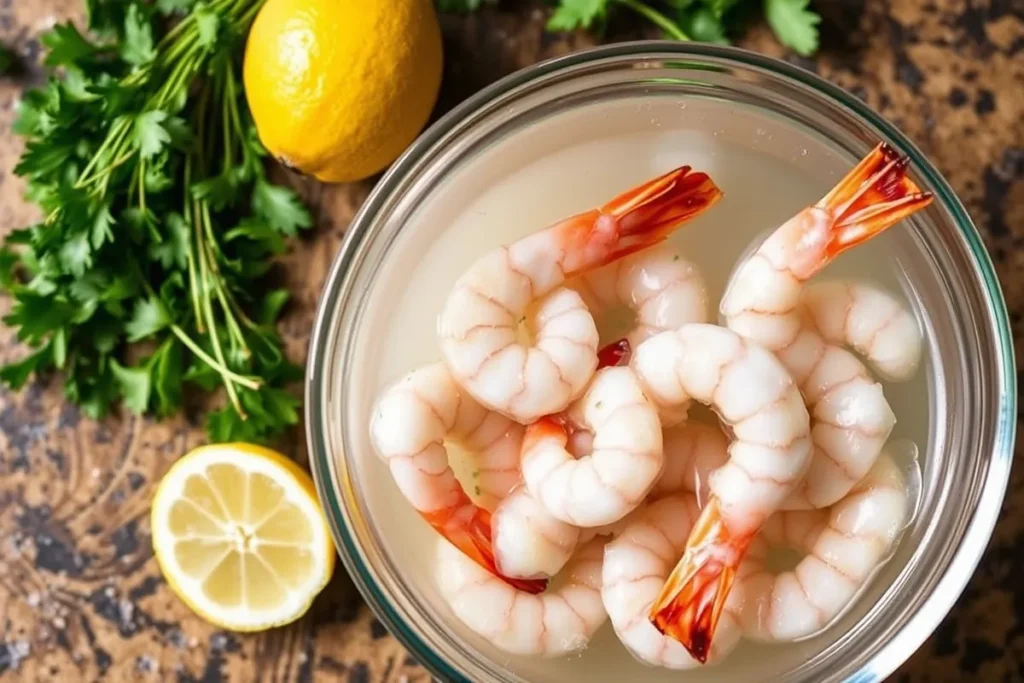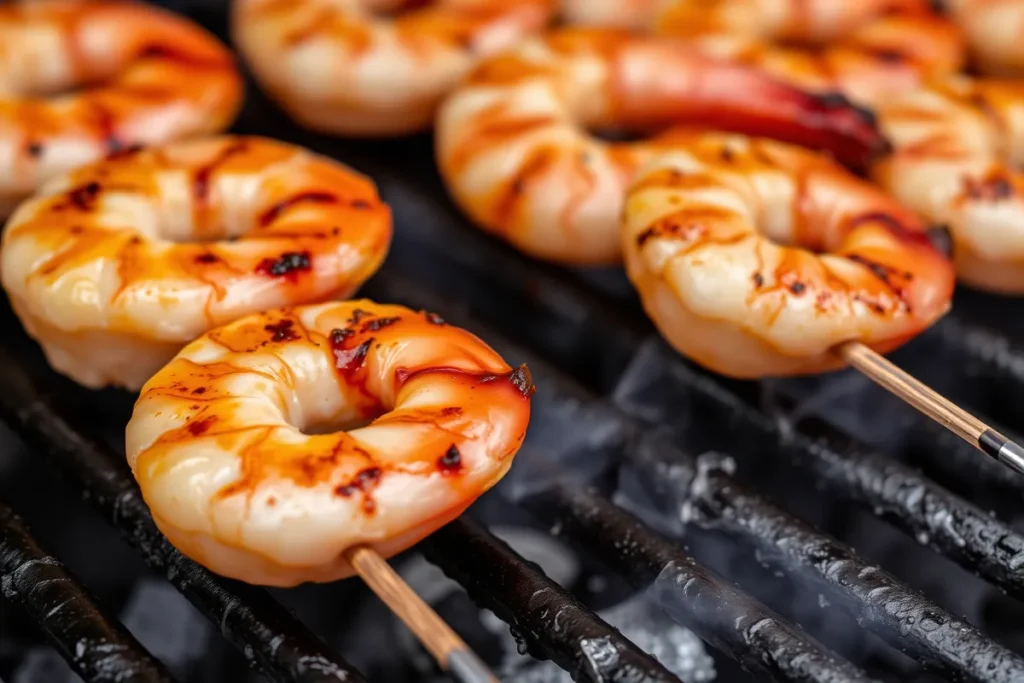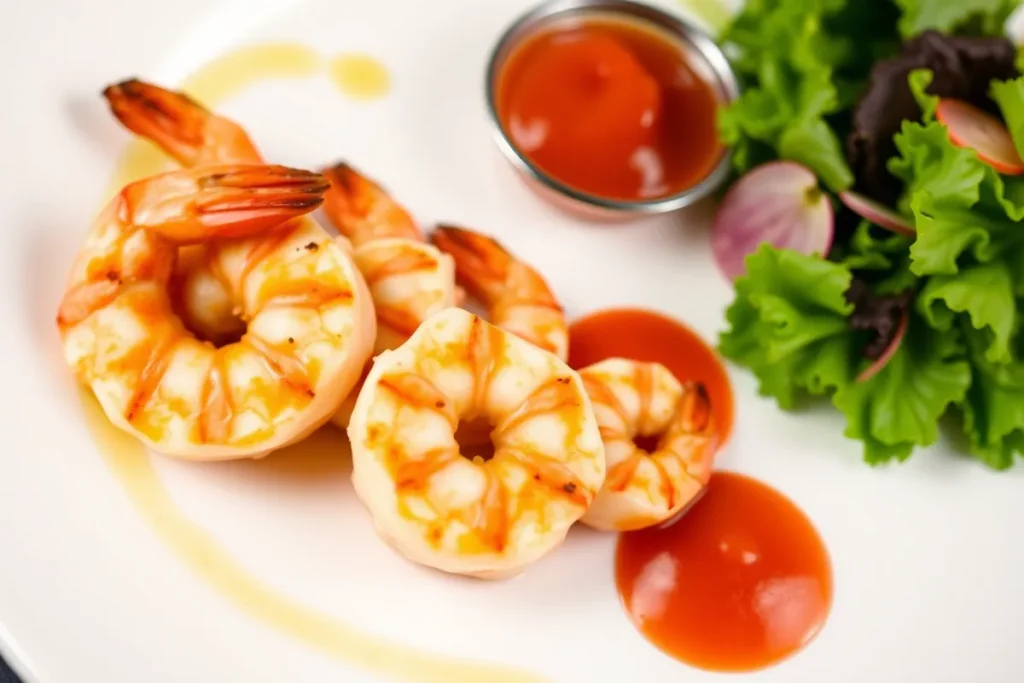Grilling shrimp has become a favorite activity for seafood enthusiasts everywhere, offering a quick and flavorful way to prepare this versatile ingredient. But what happens if you only have frozen shrimp on hand? Can you put frozen shrimp on the barbecue without compromising flavor, texture, or safety? This article dives deep into every aspect of grilling frozen shrimp, from preparation techniques to cooking methods and serving ideas, ensuring your barbecue is a roaring success. Whether you’re a seasoned grill master or a curious beginner, you’ll find everything you need to know right here.

Understanding Grilling Frozen Shrimp
The Popularity of Grilled Shrimp
Shrimp, with its delicate texture and rich flavor, is one of the most sought-after seafood items for grilling. The charred, smoky notes from the barbecue enhance the natural sweetness of the shrimp, creating a dish that’s both delicious and impressive. Grilled shrimp is also versatile—perfect for salads, tacos, skewers, or as the main attraction at any gathering.
Addressing the Question: Can You Grill Frozen Shrimp?
If you’re wondering, “Can you put frozen shrimp on the barbecue?” the answer is: yes, but it comes with a few caveats. While it’s technically possible to grill frozen shrimp directly, it’s not recommended for the best results. Grilling shrimp in a frozen state may lead to uneven cooking, rubbery textures, or an inability to absorb marinades and seasonings effectively. Thawing is often the first step toward ensuring tender and flavorful shrimp on the barbecue.
Grilling frozen shrimp isn’t as daunting as it might seem, especially when you know the tricks of the trade. With the proper preparation and grilling techniques, you can enjoy juicy, perfectly cooked shrimp that will have everyone coming back for seconds.
Preparing Frozen Shrimp for the Barbecue
Thawing Frozen Shrimp Properly
Before you fire up the grill, one of the most crucial steps is thawing your shrimp. While some may be tempted to toss frozen shrimp straight onto the barbecue, doing so could result in uneven cooking and a tough texture. The beauty of grilled shrimp lies in its tender juiciness, which is best achieved with thawed shrimp.
Importance of Thawing Before Grilling
Thawing ensures that the shrimp cooks evenly, allowing it to absorb marinades and seasoning fully. Skipping this step often leads to dry exteriors and raw, icy interiors—a barbecue faux pas!
Safe Methods to Thaw Shrimp
Here are two foolproof ways to safely thaw frozen shrimp:
- Refrigerator Thawing:
Place the shrimp in a bowl, cover it, and leave it in the refrigerator overnight. This slow and steady method preserves the shrimp’s texture and flavor, ensuring it’s ready for the grill. - Cold Water Thawing:
For a quicker option, submerge the frozen shrimp in a sealed plastic bag in cold water. Replace the water every 30 minutes until the shrimp is fully thawed. This method typically takes about 1–2 hours.
Avoiding Room Temperature Thawing
It’s tempting to leave the shrimp on the counter to thaw faster, but this is a recipe for bacteria growth and compromised flavor. Always use controlled methods to keep your shrimp fresh and safe for grilling.
Cleaning and Deveining Shrimp
Once thawed, it’s time to prep the shrimp for grilling. Cleaning and deveining are essential steps that not only improve presentation but also enhance flavor.
Necessity of Cleaning Shrimp
Even if the shrimp appears clean, rinsing is crucial to remove any residual grit or ice crystals. This step ensures a fresher taste once it’s grilled.
Steps to Devein Shrimp
- Lay the shrimp flat on a cutting board.
- Using a sharp knife, make a shallow cut along the back to expose the vein.
- Gently remove the vein with the tip of the knife or a toothpick.
Rinsing Shrimp Before Grilling
After deveining, rinse the shrimp under cold water and pat them dry with paper towels. Removing excess moisture helps the shrimp absorb seasoning and prevents them from steaming on the grill.
Marinating and Seasoning Techniques

Marinating Shrimp for Enhanced Flavor
Marinating shrimp before grilling is a game-changer. A well-prepared marinade not only infuses the shrimp with delicious flavors but also helps to retain its moisture during grilling. If you’ve ever wondered whether it’s worth the extra step, the answer is a resounding yes!
Benefits of Marinating
Marinating enhances the natural sweetness of shrimp while adding layers of flavor. Acidic ingredients like lemon juice or vinegar tenderize the shrimp, while oils and spices help lock in moisture and create a delicious crust when grilled.
Quick Marinade Recipes
Here are two crowd-pleasing marinade recipes to try:
- Garlic and Herb Marinade:
Combine olive oil, minced garlic, chopped parsley, a squeeze of lemon juice, and a pinch of salt and pepper. Let the shrimp sit in this mixture for at least 30 minutes. - Spicy Cajun Marinade:
Mix melted butter, Cajun seasoning, paprika, a dash of cayenne pepper, and a splash of lime juice. Marinate the shrimp for 20–30 minutes for a spicy kick.
Marinating Time Guidelines
Shrimp are quick to absorb flavors, so a short marination time is ideal. Aim for 15–30 minutes; leaving them in acidic marinades for too long can break down the proteins, making the shrimp mushy.
Dry Rubs and Seasoning Alternatives
If you’re short on time or prefer a simpler approach, dry rubs are a fantastic alternative to marinades. These seasoning blends create a flavorful crust on the shrimp and are incredibly easy to use.
Using Dry Rubs for Quick Preparation
Dry rubs are perfect for last-minute grilling. Simply pat the shrimp dry and coat them with your preferred seasoning blend. Let them sit for a few minutes to allow the spices to adhere before placing them on the grill.
Popular Seasoning Blends
- Old Bay Seasoning:
This classic seafood seasoning brings a bold, zesty flavor to your shrimp. Sprinkle generously over the shrimp for a traditional barbecue vibe. - Lemon Pepper Seasoning:
A light, citrusy seasoning blend that pairs perfectly with the smoky notes of grilled shrimp.
Both marinating and dry rubs offer unique advantages, so feel free to experiment to find your favorite. Whether you prefer bold spices or subtle herbaceous flavors, seasoning is the key to unforgettable grilled shrimp.
Grilling Techniques for Perfect Shrimp

Preheating and Preparing the Grill
Before placing your perfectly seasoned shrimp on the barbecue, it’s essential to prepare the grill. This ensures even cooking and prevents sticking, which can ruin your shrimp’s delicate texture.
Optimal Grill Temperature for Shrimp
Shrimp cook quickly, so maintaining the right temperature is crucial. Preheat your grill to medium-high heat (about 375–400°F). This temperature provides enough heat to achieve those coveted grill marks without overcooking the shrimp.
Cleaning and Oiling the Grill Grates
To prevent sticking and make flipping easier:
- Use a wire brush to clean the grill grates thoroughly.
- Once clean, lightly oil the grates with a high-smoke-point oil like canola or avocado oil. This step creates a nonstick surface and enhances the shrimp’s grill marks.
Skewering vs. Direct Grilling
When it comes to grilling shrimp, you have two popular options: skewering or placing them directly on the grill. Each method has its advantages, depending on your preferences.
Benefits of Using Skewers
Skewering shrimp is an excellent way to keep them together and make flipping easier. It’s especially helpful for smaller shrimp that might otherwise fall through the grill grates.
- Wooden Skewers: Soak in water for 30 minutes to prevent burning.
- Metal Skewers: Durable and reusable, they’re perfect for frequent grilling enthusiasts.
Direct Grilling Methods
Larger shrimp can be placed directly on the grill. Arrange them perpendicular to the grates to avoid slipping through and grill in batches if needed.
Preventing Shrimp from Falling Through Grates
For extra safety, use a grill basket or a sheet of aluminum foil. These tools provide stability while allowing the shrimp to cook evenly.
Cooking Times and Visual Cues
Shrimp cook astonishingly fast, so keeping an eye on them is key to avoiding overcooking.
Determining Doneness of Shrimp
Shrimp are done when they turn opaque and pink, with bright red tails if they’re still on. The flesh should feel firm but not rubbery. Overcooking can result in a dry, chewy texture, so remove the shrimp from the grill as soon as they’re ready.
Avoiding Overcooking
To avoid overcooking:
- Grill shrimp for 2–3 minutes per side, flipping once halfway through.
- Watch for a gentle curl in the shrimp’s shape; a tight “C” can indicate overcooking, while a loose “C” means perfectly cooked.
Ideal Shrimp Texture and Color
Well-cooked shrimp have a juicy, tender texture and a slightly charred surface for added flavor. Their vibrant color and smoky aroma will be a visual and sensory delight.
Now that your shrimp is grilled to perfection, it’s time to consider the best ways to serve them.
Serving Suggestions and Accompaniments

Side Dishes to Complement Grilled Shrimp
Grilled shrimp can shine as a standalone dish, but pairing it with the right side dishes elevates the meal into a complete dining experience. Whether you’re hosting a backyard barbecue or enjoying a quiet family dinner, the following sides make excellent accompaniments.
Grilled Vegetables
Nothing pairs better with smoky shrimp than a medley of grilled vegetables. Bell peppers, zucchini, asparagus, and cherry tomatoes work beautifully on the grill. Their slightly charred edges and natural sweetness balance the shrimp’s savory flavors.
Rice and Pasta Options
For a heartier meal, consider serving grilled shrimp with a starch base:
- Herbed Rice Pilaf: The light, fluffy texture of pilaf complements the shrimp’s juiciness.
- Lemon Butter Pasta: A simple pasta tossed in a lemon-butter sauce with fresh parsley adds a refreshing citrus twist.
Fresh Salads
Salads bring a crisp, refreshing element to the plate. Try these ideas:
- Mixed Greens with Citrus Vinaigrette: The tangy dressing highlights the smoky flavors of the shrimp.
- Quinoa Salad with Cucumber and Mint: This healthy side adds texture and a cooling effect to your meal.
Dipping Sauces and Condiments
A great dipping sauce can transform your grilled shrimp into a culinary masterpiece. Whether you prefer classic or bold flavors, there’s something for everyone.
Classic Cocktail Sauce
This timeless combination of ketchup, horseradish, and lemon juice delivers a zesty kick. Serve it chilled alongside hot shrimp for a contrast in temperatures and flavors.
Garlic Butter Sauce
Rich and indulgent, garlic butter sauce is a crowd-pleaser. Simply melt butter, stir in minced garlic, and season with a touch of salt and parsley for an irresistible dip.
Spicy Aioli
If you’re in the mood for something bold, whip up a spicy aioli by blending mayonnaise, minced garlic, lemon juice, and a pinch of cayenne pepper. This creamy condiment adds a fiery touch to your shrimp.
Frequently Asked Questions About Grilling Frozen Shrimp
When grilling shrimp, especially if they’re frozen, questions are bound to arise. Here’s a comprehensive look at some common queries to help you master the art of shrimp grilling.
Can You Grill Shrimp Without Thawing?
Technically, yes, you can grill shrimp without thawing them first. However, it’s not ideal. Grilling frozen shrimp can lead to uneven cooking, where the outer layer overcooks while the inside remains cold. To avoid this, thaw your shrimp using safe methods such as refrigerator thawing or cold water immersion before grilling.
How Long Should You Marinate Shrimp?
Shrimp are quick to absorb flavors, so a short marination time is sufficient. Ideally, marinate shrimp for 15–30 minutes. Leaving them in acidic marinades, like those with lemon juice or vinegar, for too long can break down the delicate proteins, making them mushy. For dry rubs, seasoning just before grilling works well.
What Size Shrimp Are Best for Grilling?
Large or jumbo shrimp (16–20 shrimp per pound) are ideal for grilling. Their size makes them less likely to fall through the grates, and they hold up well to high heat without overcooking. Smaller shrimp can still be grilled but are best skewered or cooked in a grill basket to prevent loss.
Should You Grill Shrimp with Shells On or Off?
This depends on your preference.
- Shells On: Retain more moisture, protect the shrimp from direct heat, and add flavor during grilling. However, they can be tricky to peel once cooked.
- Shells Off: Allow for easier marination and quicker eating, but require more care to prevent overcooking.
How Do You Prevent Shrimp from Sticking to the Grill?
Sticking is a common issue but easily preventable with these tips:
- Preheat the grill to medium-high and oil the grates.
- Pat the shrimp dry before placing them on the grill.
- Use a marinade or rub that includes a small amount of oil.
- Flip the shrimp only once to avoid breaking their delicate flesh.
What Are Common Mistakes to Avoid When Grilling Shrimp?
Grilling shrimp can seem simple, but a few missteps can lead to less-than-perfect results:
- Overcooking: Shrimp cook quickly, so keep an eye on them and remove them as soon as they’re pink and opaque.
- Skipping Thawing: Frozen shrimp thrown directly onto the grill often cook unevenly.
- Insufficient Seasoning: Shrimp’s mild flavor benefits from marinades, rubs, or dipping sauces.
- Cooking on Dirty Grates: A clean grill is crucial to prevent sticking and improve flavor.
Summarizing the Grilling Process for Frozen Shrimp
Key Takeaways for Successful Grilling
Grilling shrimp—especially frozen shrimp—might seem daunting at first, but with the right approach, it’s surprisingly simple. By following a few essential steps, you can achieve tender, flavorful shrimp every time. Start by thawing your shrimp properly to ensure even cooking and optimal texture. Prep them by cleaning and deveining, then choose a marinade or dry rub to infuse them with flavor. Once seasoned, grill them over medium-high heat, paying close attention to cooking times to avoid overcooking. Pair your shrimp with complementary side dishes and dipping sauces, and you’ll have a barbecue feast that’s both delicious and memorable.
Encouragement to Try Grilling Shrimp at Home
Grilling shrimp is not only quick and easy but also highly rewarding. Whether you’re hosting a summer barbecue or preparing a family dinner, putting frozen shrimp on the barbecue can be a culinary adventure worth exploring. Experiment with different marinades, grilling techniques, and serving options to find your signature style. With this guide in hand, you’re fully equipped to grill shrimp like a pro. So, fire up the grill, gather your ingredients, and get ready to wow your guests with smoky, juicy, perfectly cooked shrimp. Enjoy!

